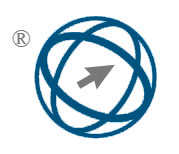Hierarchical Feature Fusion With Inception V3 for Multiclass Plant Disease Classification
Abstract
Artificial Intelligence (AI) and Deep Learning (DL) are revolutionizing plant disease detection, which is crucial for mitigating crop loss, improving food security, and enhancing yield. Traditional manual methods, such as field visits for disease diagnosis, are labor-intensive, time-consuming, and costly, highlighting the demand for automated, real-time applications. However, plant disease classification faces challenges such as class variations, cluttered backgrounds, lesion scale variations, and the need for robust models. Several Convolutional Neural Network (CNN)-based frameworks have been proposed to tackle these challenges, but they often suffer from limitations such as fixed-size kernels and inefficient feature utilization across deeper layers. These limitations lead to feature loss during the initial stages of feature extraction, reducing the model's overall effectiveness in multi-class plant disease classification. To address these issues, we introduce HFFIncep-Net, a novel Deep Learning framework that fuses hierarchical features with the power of the Inception V3 architecture. The Hierarchical Feature Fusion (HFF) stem extracts multiscale features, which are fused at multiple levels within the network. This enhances feature representation and mitigates information loss in the initial layers. Incorporating two Inception V3 blocks, the model captures a diverse set of features at different scales, further improving classification performance. Additionally, the inclusion of a Global Average Pooling (GAP) layer reduces computational complexity while maintaining high accuracy. To enhance training stability and performance, we employ the Swish activation function, which facilitates smoother gradient propagation during backpropagation. When evaluated on the PlantVillage and Cassava Leaf Disease (CLD) datasets, HFFIncep-Net achieves 94.61% precision, 94.31% recall, 94.31% F1 score, and 97.80% accuracy, outperforming existing CNN-based methods. These results demonstrate that HFFIncep-Net is an effective solution for early-stage, multi-class plant disease classification, with significant potential for practical deployment in agricultural applications.
Full Text:
PDFReferences
F. Taghikhah, A. Voinov, N. Shukla, T. Filatova, and M. Anufriev, “Integrated modeling of extended agro-food supply chains: A systems approach,” Eur J Oper Res, vol. 288, no. 3, pp. 852–868, Feb. 2021, doi: 10.1016/j.ejor.2020.06.036.
D. Imami, “DRINI IMAMI VLADISLAV VALENTINOV ENGJELL SKRELI Food Safety and Value Chain Coordination in the Context of a Transition Economy: The Role of Agricultural Cooperatives,” Int J Commons, vol. 15, no. 1, pp. 21–34, doi: 10.5334/DRINI.
Y. Shang, M. Kamrul Hasan, G. J. Ahammed, M. Li, H. Yin, and J. Zhou, “Applications of nanotechnology in plant growth and crop protection: A review,” 2019, MDPI AG. doi: 10.3390/molecules24142558.
D. Bass, G. D. Stentiford, H. C. Wang, B. Koskella, and C. R. Tyler, “The Pathobiome in Animal and Plant Diseases,” Nov. 01, 2019, Elsevier Ltd. doi: 10.1016/j.tree.2019.07.012.
M. H. Saleem, J. Potgieter, and K. M. Arif, “Plant disease detection and classification by deep learning,” Nov. 01, 2019, MDPI AG. doi: 10.3390/plants8110468.
U. Shruthi, V. Nagaveni, and B. K. Raghavendra, “A Review on Machine Learning Classification Techniques for Plant Disease Detection,” in 2019 5th International Conference on Advanced Computing and Communication Systems, ICACCS 2019, Institute of Electrical and Electronics Engineers Inc., Mar. 2019, pp. 281–284. doi: 10.1109/ICACCS.2019.8728415.
M. Nagaraju and P. Chawla, “Systematic review of deep learning techniques in plant disease detection,” International Journal of System Assurance Engineering and Management, vol. 11, no. 3, pp. 547–560, Jun. 2020, doi: 10.1007/s13198-020-00972-1.
X. E. Pantazi, D. Moshou, and A. A. Tamouridou, “Automated leaf disease detection in different crop species through image features analysis and One Class Classifiers,” Comput Electron Agric, vol. 156, pp. 96–104, Jan. 2019, doi: 10.1016/j.compag.2018.11.005.
M. Muhathir, W. Hidayah, and D. Ifantiska, “Utilization of Support Vector Machine and Speeded up Robust Features Extraction in Classifying Fruit Imagery,” Computer Engineering and Applications Journal, vol. 9, no. 3, pp. 183–193, Oct. 2020, doi: 10.18495/COMENGAPP.V9I3.347.
F. Mohameth, C. Bingcai, K. A. Sada, F. Mohameth, C. Bingcai, and K. A. Sada, “Plant Disease Detection with Deep Learning and Feature Extraction Using Plant Village,” Journal of Computer and Communications, vol. 8, no. 6, pp. 10–22, Jun. 2020, doi: 10.4236/JCC.2020.86002.
S. Iniyan, R. Jebakumar, P. Mangalraj, M. Mohit, and A. Nanda, “Plant Disease Identification and Detection Using Support Vector Machines and Artificial Neural Networks,” Advances in Intelligent Systems and Computing, vol. 1056, pp. 15–27, 2020, doi: 10.1007/978-981-15-0199-9_2.
K. Hanbay, “Hyperspectral image classification using convolutional neural network and two-dimensional complex Gabor transform,” Journal of the Faculty of Engineering and Architecture of Gazi University, vol. 35, no. 1, pp. 443–456, 2020, doi: 10.17341/gazimmfd.479086.
B. S. Kusumo, A. Heryana, O. Mahendra, and H. F. Pardede, “Machine Learning-based for Automatic Detection of Corn-Plant Diseases Using Image Processing,” 2018 International Conference on Computer, Control, Informatics and its Applications: Recent Challenges in Machine Learning for Computing Applications, IC3INA 2018 - Proceeding, pp. 93–97, Jul. 2018, doi: 10.1109/IC3INA.2018.8629507.
K. Golhani, S. K. Balasundram, G. Vadamalai, and B. Pradhan, “A review of neural networks in plant disease detection using hyperspectral data,” Sep. 01, 2018, China Agricultural University. doi: 10.1016/j.inpa.2018.05.002.
Z. Tianyu, M. Zhenjiang, and Z. Jianhu, “Combining CNN with Hand-Crafted Features for Image Classification,” International Conference on Signal Processing Proceedings, ICSP, vol. 2018-August, pp. 554–557, Feb. 2019, doi: 10.1109/ICSP.2018.8652428.
S. Zhang, S. Zhang, C. Zhang, X. Wang, and Y. Shi, “Cucumber leaf disease identification with global pooling dilated convolutional neural network,” Comput Electron Agric, vol. 162, pp. 422–430, Jul. 2019, doi: 10.1016/J.COMPAG.2019.03.012.
J. Zhang, Y. Rao, C. Man, Z. Jiang, and S. Li, “Identification of cucumber leaf diseases using deep learning and small sample size for agricultural Internet of Things,” Int J Distrib Sens Netw, vol. 17, no. 4, 2021, doi: 10.1177/15501477211007407.
Y. Zhong, M. Zhao, Y. Zhong, and M. Zhao, “Research on deep learning in apple leaf disease recognition,” CEAgr, vol. 168, p. 105146, Jan. 2020, doi: 10.1016/J.COMPAG.2019.105146.
H. Alghamdi and T. Turki, “PDD-Net: Plant Disease Diagnoses Using Multilevel and Multiscale Convolutional Neural Network Features,” Agriculture (Switzerland), vol. 13, no. 5, May 2023, doi: 10.3390/agriculture13051072.
M. H. Ashraf and H. Alghamdi, “HFF-Net: A hybrid convolutional neural network for diabetic retinopathy screening and grading,” Biomedical Technology, vol. 8, pp. 50–64, Dec. 2024, doi: 10.1016/j.bmt.2024.09.004.
A. S. Keceli, A. Kaya, C. Catal, and B. Tekinerdogan, “Deep learning-based multi-task prediction system for plant disease and species detection,” Ecol Inform, vol. 69, Jul. 2022, doi: 10.1016/j.ecoinf.2022.101679.
W. Chen, J. Chen, R. Duan, Y. Fang, Q. Ruan, and D. Zhang, “MS-DNet: A mobile neural network for plant disease identification,” Comput Electron Agric, vol. 199, Aug. 2022, doi: 10.1016/j.compag.2022.107175.
D. Sutaji and O. Yıldız, “LEMOXINET: Lite ensemble MobileNetV2 and Xception models to predict plant disease,” Ecol Inform, vol. 70, Sep. 2022, doi: 10.1016/j.ecoinf.2022.101698.
T. Sanida, A. Sideris, M. V. Sanida, and M. Dasygenis, “Tomato leaf disease identification via two–stage transfer learning approach,” Smart Agricultural Technology, vol. 5, Oct. 2023, doi: 10.1016/j.atech.2023.100275.
S. G. Paul et al., “A real-time application-based convolutional neural network approach for tomato leaf disease classification,” Array, vol. 19, Sep. 2023, doi: 10.1016/j.array.2023.100313.
C. Zhou, S. Zhou, J. Xing, and J. Song, “Tomato Leaf Disease Identification by Restructured Deep Residual Dense Network,” IEEE Access, vol. 9, pp. 28822–28831, 2021, doi: 10.1109/ACCESS.2021.3058947.
A. S. Paymode and V. B. Malode, “Transfer Learning for Multi-Crop Leaf Disease Image Classification using Convolutional Neural Network VGG,” Artificial Intelligence in Agriculture, vol. 6, pp. 23–33, Jan. 2022, doi: 10.1016/j.aiia.2021.12.002.
R. Pan et al., “A two-stage feature aggregation network for multi-category soybean leaf disease identification,” Journal of King Saud University - Computer and Information Sciences, vol. 35, no. 8, Sep. 2023, doi: 10.1016/j.jksuci.2023.101669.
S. Zhang, D. Wang, and C. Yu, “Apple leaf disease recognition method based on Siamese dilated Inception network with less training samples,” Comput Electron Agric, vol. 213, Oct. 2023, doi: 10.1016/j.compag.2023.108188.
G. Dai, Z. Tian, J. Fan, C. K. Sunil, and C. Dewi, “DFN-PSAN: Multi-level deep information feature fusion extraction network for interpretable plant disease classification,” Comput Electron Agric, vol. 216, Jan. 2024, doi: 10.1016/j.compag.2023.108481.
G. Dai, J. Fan, Z. Tian, and C. Wang, “PPLC-Net:Neural network-based plant disease identification model supported by weather data augmentation and multi-level attention mechanism,” Journal of King Saud University - Computer and Information Sciences, vol. 35, no. 5, May 2023, doi: 10.1016/j.jksuci.2023.101555.
P. S. Thakur, T. Sheorey, and A. Ojha, “VGG-ICNN: A Lightweight CNN model for crop disease identification,” Multimed Tools Appl, vol. 82, no. 1, pp. 497–520, Jan. 2023, doi: 10.1007/s11042-022-13144-z.
M. H. Ashraf, F. Jabeen, H. Alghamdi, M. S. Zia, and M. S. Almutairi, “HVD-Net: A Hybrid Vehicle Detection Network for Vision-Based Vehicle Tracking and Speed Estimation,” Journal of King Saud University - Computer and Information Sciences, vol. 35, no. 8, Sep. 2023, doi: 10.1016/j.jksuci.2023.101657.
M. H. Ashraf, F. Jabeen, H. Alghamdi, M. S. Zia, and M. S. Almutairi, “HVD-Net: A Hybrid Vehicle Detection Network for Vision-Based Vehicle Tracking and Speed Estimation,” Journal of King Saud University - Computer and Information Sciences, vol. 35, no. 8, Sep. 2023, doi: 10.1016/j.jksuci.2023.101657.
C. Szegedy et al., “Going Deeper with Convolutions.”
A. Krizhevsky, I. Sutskever, and G. E. Hinton, “ImageNet Classification with Deep Convolutional Neural Networks.” [Online]. Available: http://code.google.com/p/cuda-convnet/
K. He, X. Zhang, S. Ren, and J. Sun, “Deep Residual Learning for Image Recognition,” Dec. 2015, [Online]. Available: http://arxiv.org/abs/1512.03385
G. Huang, Z. Liu, L. van der Maaten, and K. Q. Weinberger, “Densely Connected Convolutional Networks,” Aug. 2016, [Online]. Available: http://arxiv.org/abs/1608.06993
DOI: https://doi.org/10.31449/inf.v49i27.8208

This work is licensed under a Creative Commons Attribution 3.0 License.









